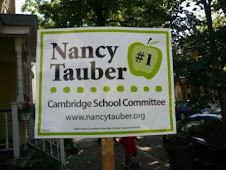I have spent my teaching career working with middle school students and have seen first-hand the strengths and capabilities of 11-14 year olds. When presented with an opportunity to study a topic in depth and connect it to their world, their potential for learning is limitless. This age group is capable of so much; therefore, we must have the highest expectations of them.
We need to focus on time spent both in and out of school. Each year, only one-sixth of a middle schooler’s 6,000 waking hours are spent in school. After fifth grade, enrollment in after school programs drops significantly. It is critical that we find more innovative programs to attract 11-14 year olds, especially between the hours of 2 and 6pm.
I have heard many parents complain that the current K-8 model does not provide their children with a wide enough social network. This is a legitimate concern, especially at some of our schools with less than 15 students in each 7th and 8th grade class. We must do more to improve the middle school programs at these under-enrolled schools.
At the same time, many see the positive aspects of the K-8 model. Older students have opportunities to interact with younger ones. The pressure to grow up quickly is not as intense since young adolescents are in smaller schools with younger students. It also gives 7th and 8th graders a chance to take a strong leadership role before going on to high school.
This task is difficult because we are dealing with a tricky age group. Young adolescents want a sense of belonging, influence, independence, competency and security. I remember looking over at one of my 8th grade students who was physically mature, socially sophisticated and had a strong desire to be considered “cool” by his friends.’ But someone had put a stuffed animal on his desk, and he was sitting there hugging it as though he were a toddler getting ready for a nap. These students want to be treated like grown-ups, but still want the comfort of a stuffed animal.
The middle school years are a weak point in our system. Opinions differ over the K-8 model, but everyone agrees that our children must be ready for high school and beyond. Currently, there is an initiative to gather information about the middle school years. If big changes are going to occur in the next few years, I believe we need a person on the School Committee with middle school experience.
